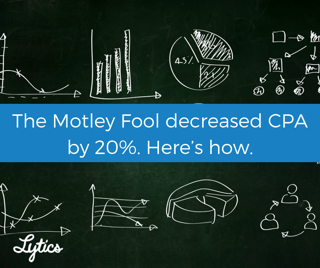How Customer Data Platforms Can Increase Advertising
June 21, 2019For advertising to work, it needs to be accurately targeted. Good ads speak to customers about their personal needs and interests, which is why they generate sales. But accurate targeting is notoriously difficult and it’s common to waste half a marketing budget on directing ads to people who simply aren’t suited to the product or service on offer. Many marketers are now trying to overcome the challenge of targeting by using Data Marketing Platforms (DMPs) to create lookalike audiences with limited understanding of their current customers. While DMPs are effective at providing aggregate-level data, they often fall short when it comes to improving targeting – and they don’t necessarily help marketers understand their customers across a lifecycle, encompassing their first visit, research, purchase and post-purchase.
Programmatic advertising is another emerging industry which marketers have been experimenting with varying degrees of success. Programmatic advertising helps buy ads in real-time and target to specific individuals. While programmatic advertising can seem efficient, it’s actually more expensive. If you simply rely on DMP data on whom to target, you still are making advertising decisions on how a 3rd-party company (DMP) categorizes and defines the user persona. This lack of transparency can make it difficult for brands to understand exactly where their budgets are going and whom they’re targeting.
Programmatic advertising and DMPs are both valuable tools for marketers. But a system that brings together all relevant data for targeting a known profile can lead to best possible results.
Solution to the Challenge of How to Achieve Accurate Targeting
There is a great opportunity for marketers to use big data to develop a better understanding of customers and improve targeting. The trouble is, most marketers lack the knowledge to do this effectively. Customer Data Platforms (CDPs) help marketers understand their customers by bringing together all relevant data already available within the organization to create a 360-degree customer profile. And unlike DMPs, which collect anonymous data, CDPs collect data that can be tied to an individual, which makes them extremely useful for marketers who want to target customers with personalized content. Perhaps unsurprisingly, an increasing number of brands recognize the benefits of CDPs. According to a report by the Customer Data Platform Institute, CDP vendors reported more than $300 million revenue in 2016, and the industry is expected to reach more than $1 billion by 2019.
Here’s a closer look at how CDPs can be used to increase advertising ROI:
- Step 1: Bring Together Data from Various Systems
CDPs collect, collate and centralize all incoming data across several sources and channels, helping marketers ensure they are targeting the right audience. The ability to view such a broad set of data for a profile makes it easier to segment the audience based on whom you’re targeting.
- Step 2a: Target the Right Visitors
The data about the audience from CDP is sent to a DMP to gather additional data points where possible and create a larger data set for the audience. This enables better targeting of the audiences. CDP data is then used for retargeting ads in conjunction with programmatic advertising platforms and demand-side platforms (DSPs).
- Step 2b: Target Look-Alike Audiences Using DMP
The targeted data set from CDP data is fed into a DMP to create a look-alike audience set. This audience is then targeted with advertising through integration with a DSP.
- Step 2c: Feed CDP Data into Other Social Advertising Platforms
CDP data is used for highly accurate retargeting on Facebook, Twitter, Instagram, YouTube, LinkedIn, and other social networks. CDP data is used to generate look-alike models on these sites.
Taking Customer Targeting to the Next Level
CDPs fulfil the marketing industry’s need for data-driven analytics while providing multi-channel integration that makes it much easier to provide customers with a seamless experience. CDPs consolidate all existing data, update it with the help of artificial intelligence and apply real interactions so marketers can chart micro-decisions that can make the difference between gaining and losing a customer. CDPs also solve several issues that have plagued advertising for years, including outdated or fragmented data, incomplete or incorrect information and a lack of customer behavior tracking. Marketers can now personalize their products and services with sophisticated algorithms supported by AI and machine learning – all thanks to CDPs. What’s more, information can be continuously fed into a CDP, ensuring that customer profiles are constantly updated.
Additional Best Practices to Further Enhance Advertising ROI
Here are a few more best practices that can help improve advertising ROI:
- Keep experimenting with advertising segments – perform A/B testing
- Measure results for each experiment and act on them
- Look-alike audiences can be expensive, which is why marketers should experiment with a smaller data set first before trying out larger data sets
- Create a feedback loop to take the activity data from various ads and input it back into CDP – this enables continuous fine-tuning of ads
- Create multi-stage, in-depth, multi-channel campaigns and leverage CDP, DMP, programmatic advertising, data sciences to achieve the best possible ROI
For help or more information on how to achieve better advertising ROI, reach out to me at cdp@hgsdigital.com.


